The following function:
def func(x):
for k in x['slices']:
for j in k:
print(x['low'].iloc[j])
applied in the following manner works:
func(test)
but as follow doesn't:
test.apply(func, axis=1)
Would you be able to determine why?
EDIT: I used the print only for debug purpose: the function used to be :
def func(x):
result=[]
for k in x:
for j in k:
result.append(x['low'].iloc[j])
return result
which also didn't work
Below the elements to reconstructs the data.
df = pd.DataFrame(dict, columns=["low", "slices"])
dict = {'low': {0: 1207.25,
1: 1207.5,
2: 1205.75,
3: 1206.0,
4: 1201.0,
5: 1202.75,
6: 1203.75},
'slices': {0: [slice(1, 2, None)],
1: [slice(1, 3, None), slice(2, 3, None)],
2: [slice(1, 4, None), slice(2, 4, None), slice(3, 4, None)],
3: [slice(1, 5, None),
slice(2, 5, None),
slice(3, 5, None),
slice(4, 5, None)],
4: [slice(1, 6, None),
slice(2, 6, None),
slice(3, 6, None),
slice(4, 6, None),
slice(5, 6, None)],
5: [slice(1, 7, None),
slice(2, 7, None),
slice(3, 7, None),
slice(4, 7, None),
slice(5, 7, None),
slice(6, 7, None)],
6: [slice(1, 8, None),
slice(2, 8, None),
slice(3, 8, None),
slice(4, 8, None),
slice(5, 8, None),
slice(6, 8, None),
slice(7, 8, None)]}}
